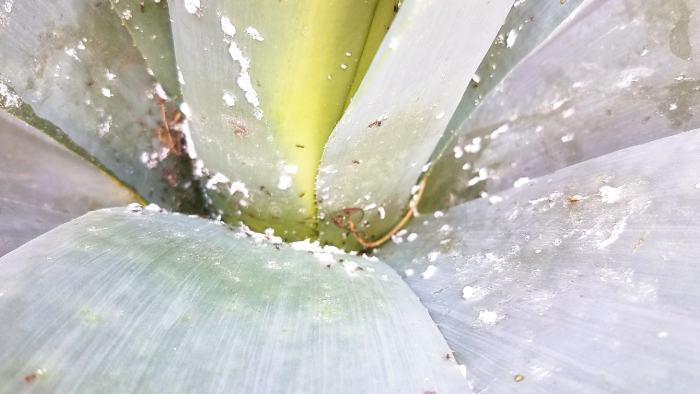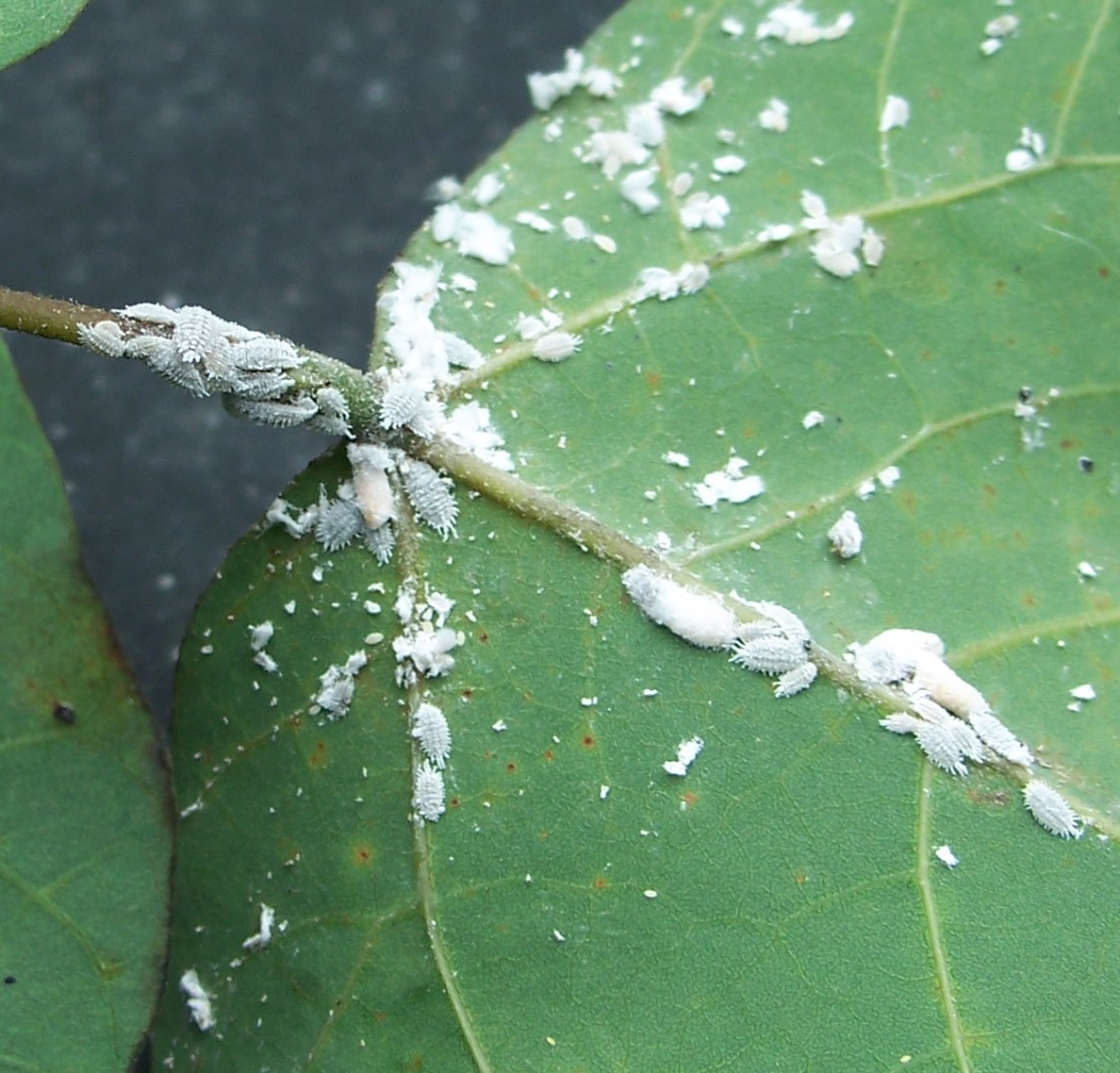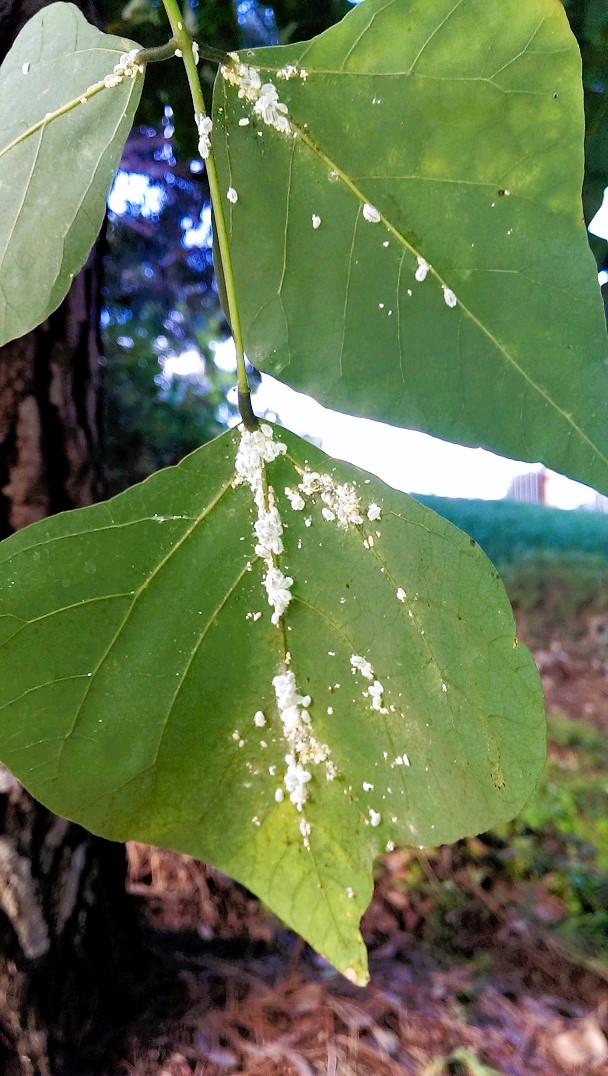
The Pest
Mealybugs are piercing-sucking insects with soft, oval, segmented bodies covered with wax that are closely related to soft scales. Mealybugs will suck the sap from a plant or tree which leads to production of honeydew often covering leaves and lead to sooty mold growth. These insects are most active in the hot weather months of May-September, they thrive on indoor plants and in areas without cold winters. Mealybugs will congregate in large numbers. These high populations will cause premature leaf die-back and slow plant growth.


Damage
Mealybugs infestations can show as cottony, white masses on plants. Indoor plants are a common host for Mealybugs. Other commonly affected plants are:
The wax and egg sacs left by large accumulations of mealybugs can be unattractive. These high populations of the pest will feed on foliage and continue to suck sap from plant phloem. This well result in slow plant growth. The excretion of honeydew and wax produced by mealybugs can lead to development of black sooty mold causing reduction in plant vigor. Mealybugs can also result in reduced plant and fruit quality as well as cause leaf drop.

Management
Monitoring plants on a regular basis can help in reducing mealybugs. Inspecting your plants regularly and prior to introduction to your home or other plants is best practice. If infestation occurs, pruning mealybugs or removing infected plants may be necessary. Disposing of infected plants before exposure to clean plants can aide in reducing population growth. An application to assist in control of mealybugs can help reduce the spread of this pest. For help with management and mealybug treatment options contact our team for support


